We had to somewhat go back to the drawing board for our DIY Cane Headboard after our Week 4 adventure, but I’m so glad we didn’t give up because I’m SO in love with how this headboard is coming together!
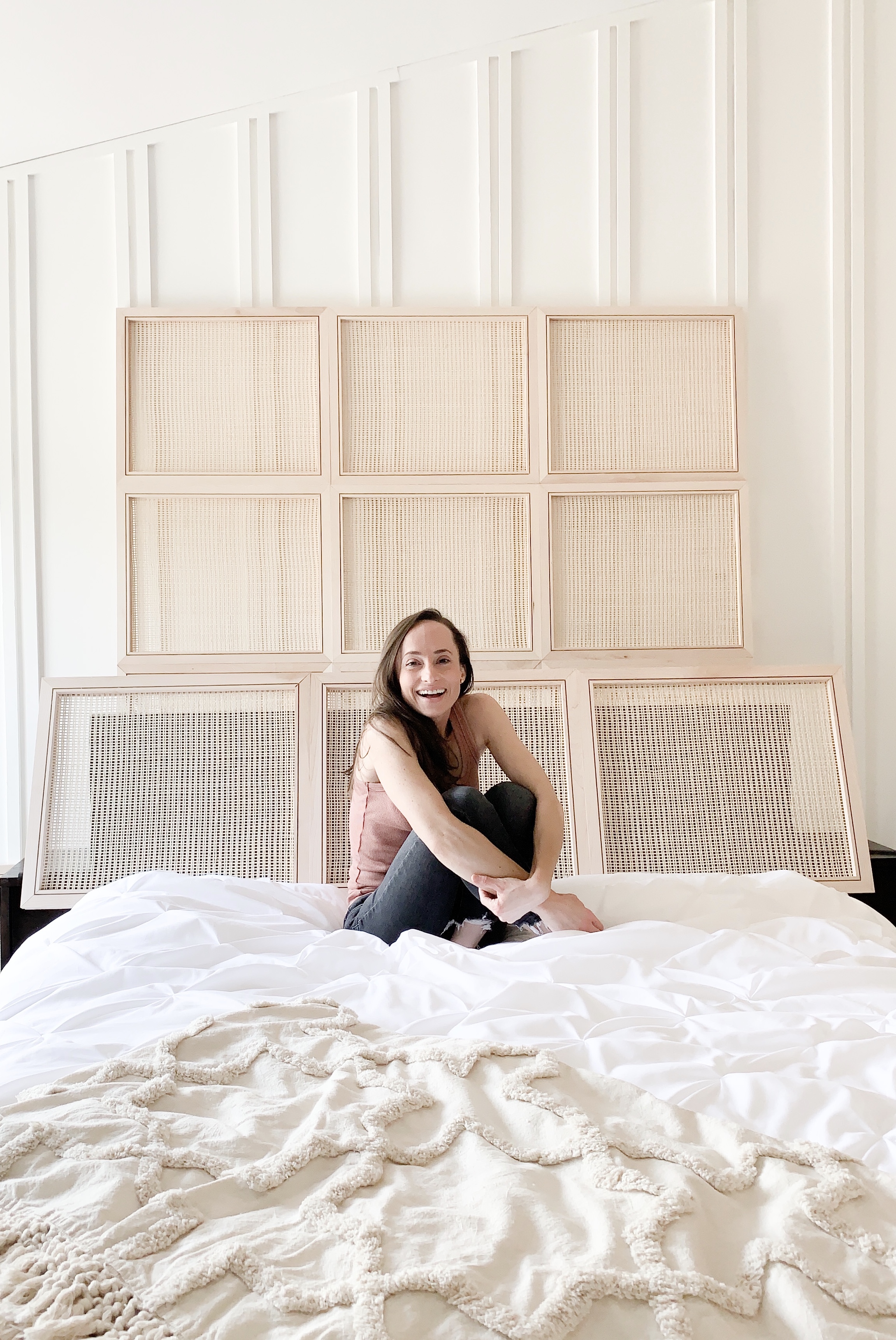
Welcome to Week 6 of the One Room Challenge! If you glance at my home decor page, you’ll notice my posts skip week 5. The event was canceled last week to give everyone a chance to focus on racism, and we used every free moment we had to listen and learn from all the wonderful people willing to share their perspectives and experiences.
DIY Cane Headboard: The Build
The cane headboard is only about 75% assembled, but it looks awesome. Even the grooves that we cut with the table saw add an awesome touch.
As a quick refresh, we planned to tuck the cane into the groove, but we couldn’t get it to fit. Instead, we decided to sandwich the cane between two wood frames. The grooved maple in the front for looks and strength, and the pine on the back for security and the extra bump out.
In the method we used, the groove wasn’t functional, and you could totally leave it out. I loved the look, which is great – since we’d already cut all of them!
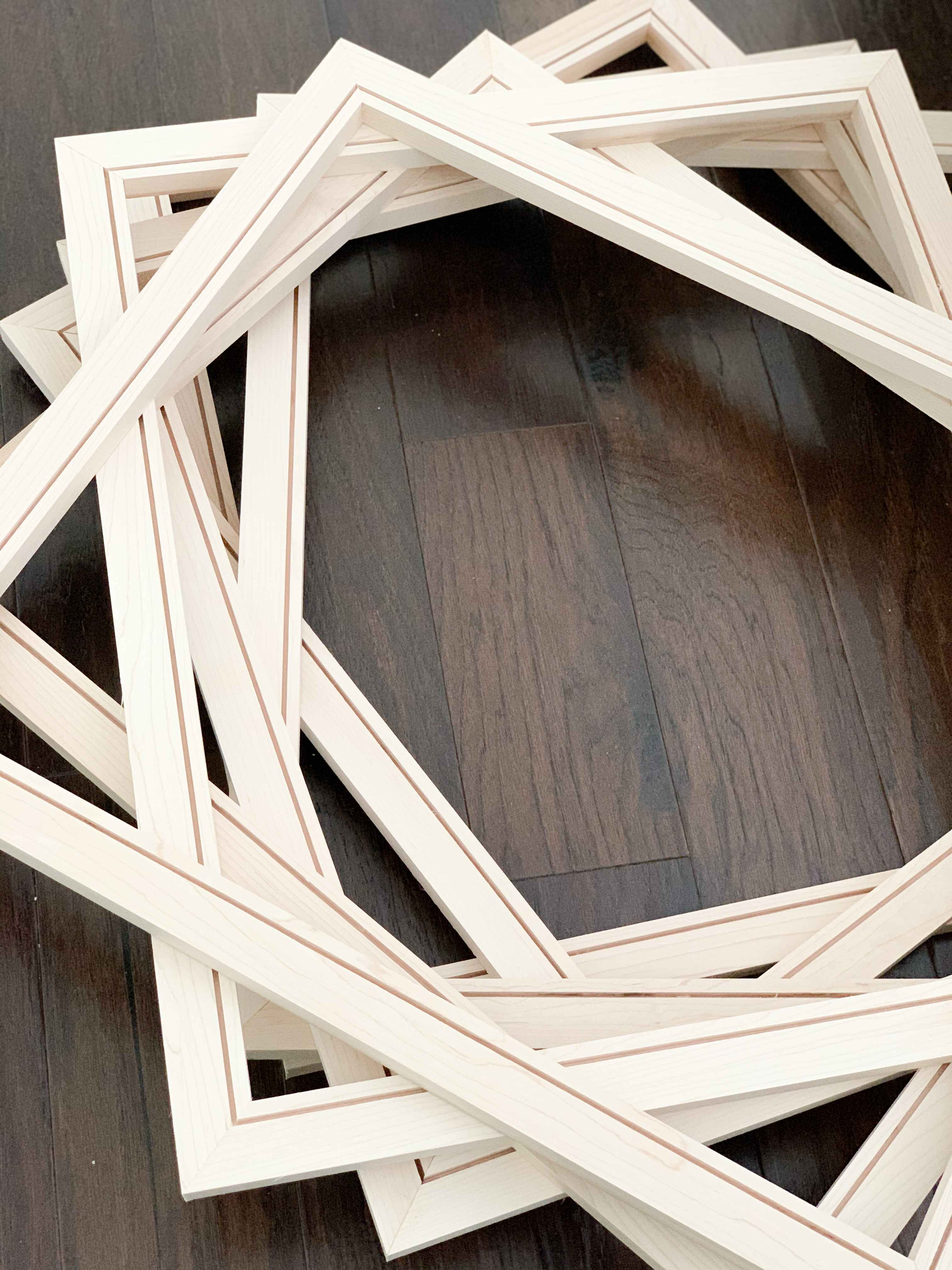
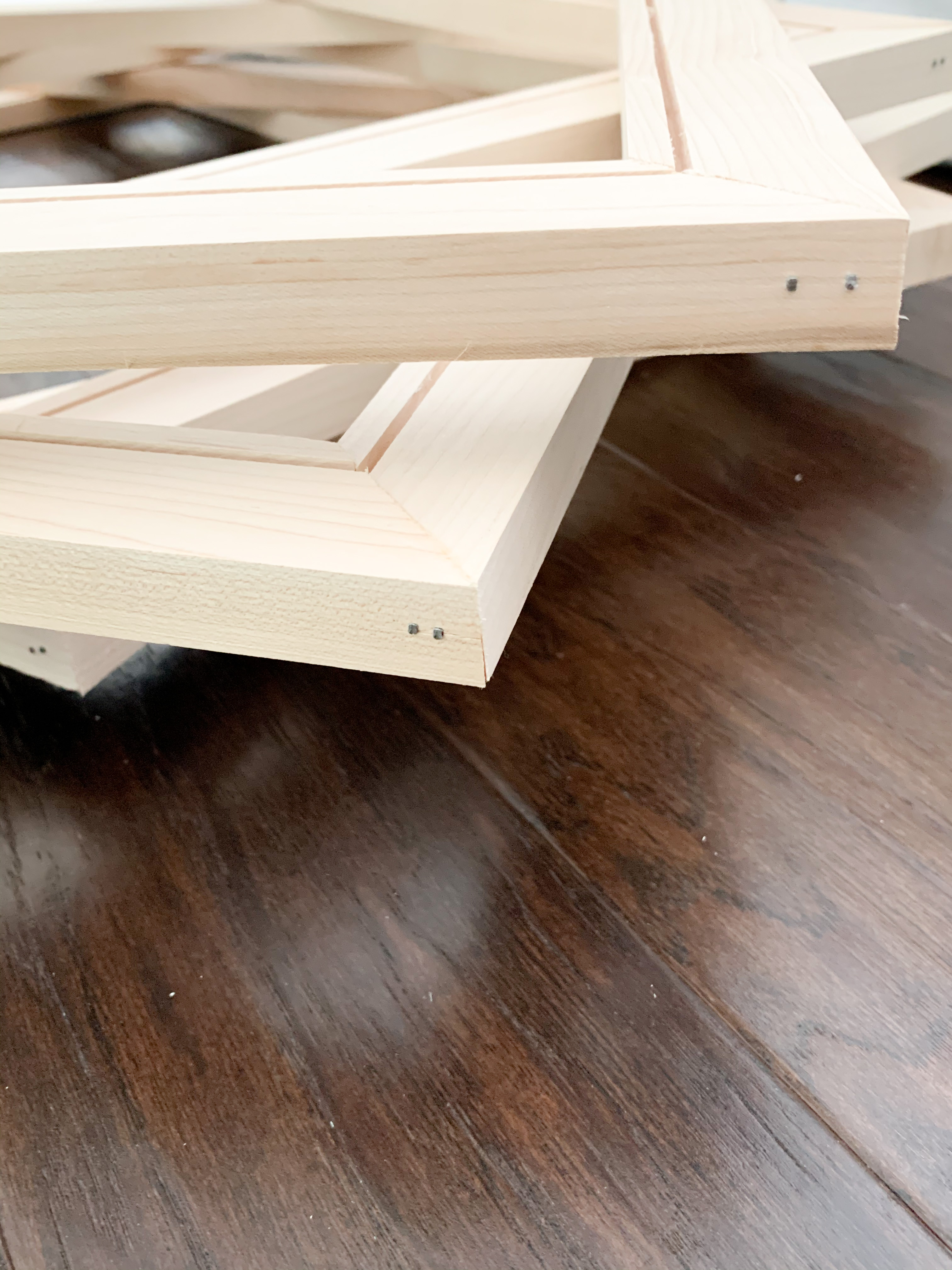
Frame Assembly
The strength of the maple proved to be a challenge in a few different ways, starting with the frame assembly. We used wood glue and then the nail gun to attach each mitered corner.
The nail gun didn’t initially seem to be working. The nails either weren’t going in far enough or were looping out the back. It wasn’t until we switched to shorter nails that we were successful.
We ended up using 1 1/4″ nails and placing them as close to the edge as we comfortably could (pictured above). Even with that working most of the time, keep a hammer and nail punch nearby. Some nails still needed that extra pound!
The good news is that wood glue is extremely strong, and will hold everything perfectly. The main purpose of these nails is to hold everything in place until the glue cures.
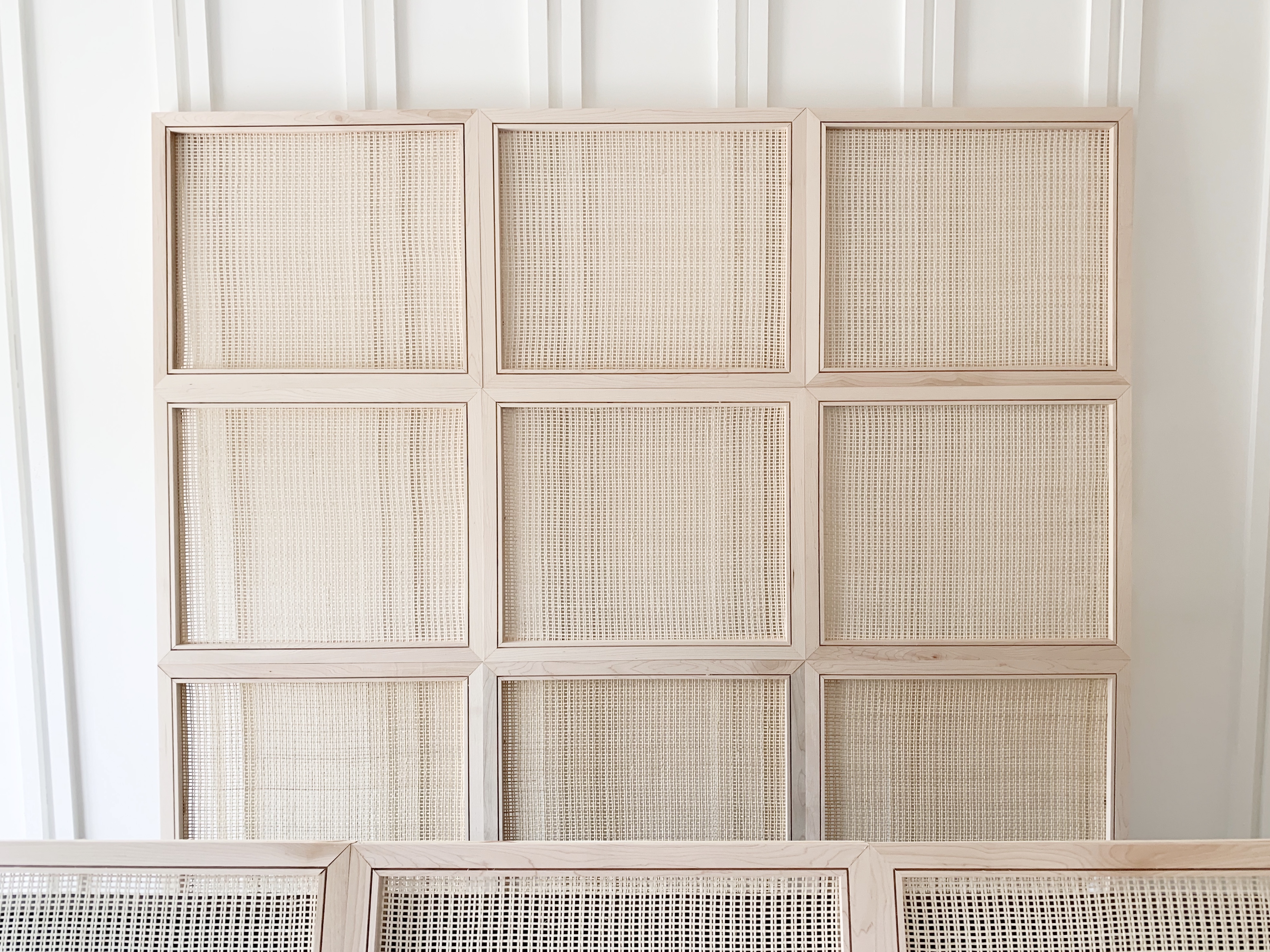
Cane Headboard Webbing
Before I talk about how we added the cane, let me give a huge shoutout to the source of the caning material. Frank’s Cane and Rush Supply was amazing to work with! They aren’t a typical e-commerce website, but that didn’t seem to matter. Their pricing was one of the best I could find, and I was so impressed with their quick response.
I even received a phone call that included a few tips on how to best use the cane. They clearly take pride in their products and want to eliminate as much user error as possible. I was so impressed!
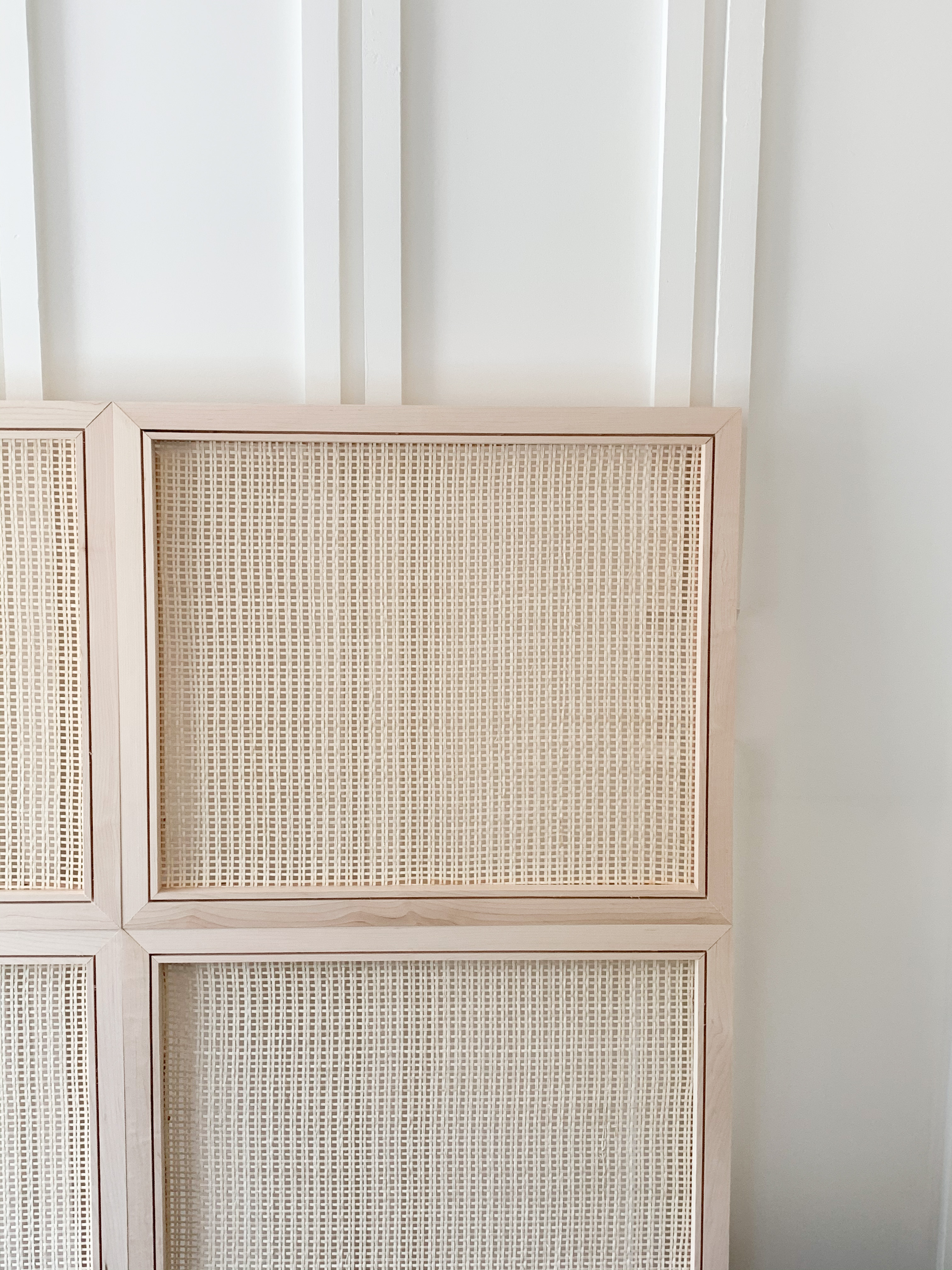
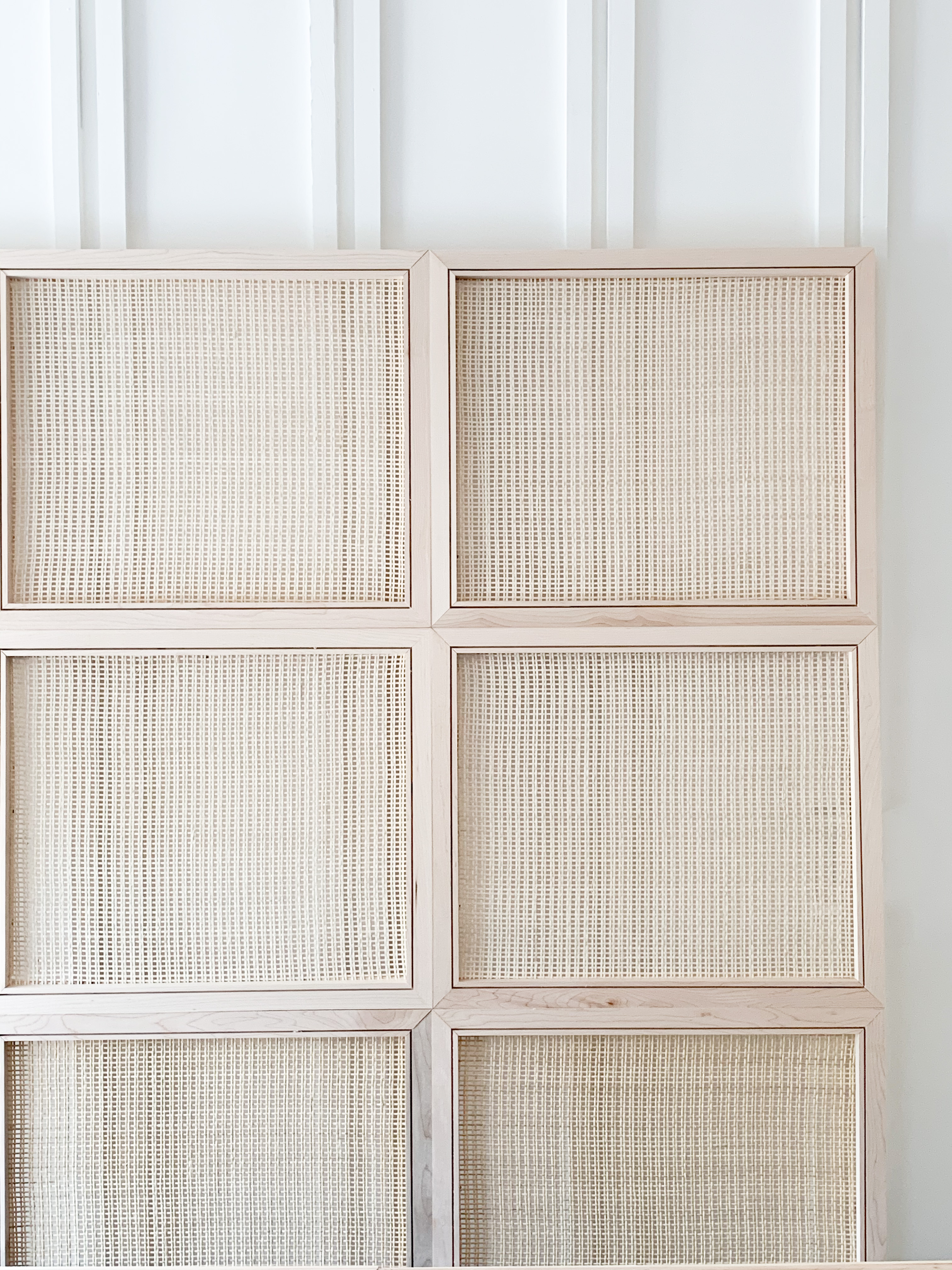
Soak the Cane
It’s so important to make sure your caning material is wet before you work with it. We filled our bathtub with water and let the cane soak for a couple of hours before we used it.
When wet, the cane is pliable and won’t break easily. Once dry, it’s extremely brittle. This is why you see a towel in most of my photos. You will definitely need something to soak up the water!
Staple It!
I know this will seem pretty basic, but we used a staple gun to initially hold the cane fabric in place. First, lay the maple frame with the groove side (face) pointing downward. The cane fabric will lay on top of the back to be stapled.
Measure and cut the cane fabric to be slightly larger than the frame itself. You want the fabric to hang over the opening slightly on all sides for added leverage. Use the lines of the cane to make sure it’s as straight as possible.
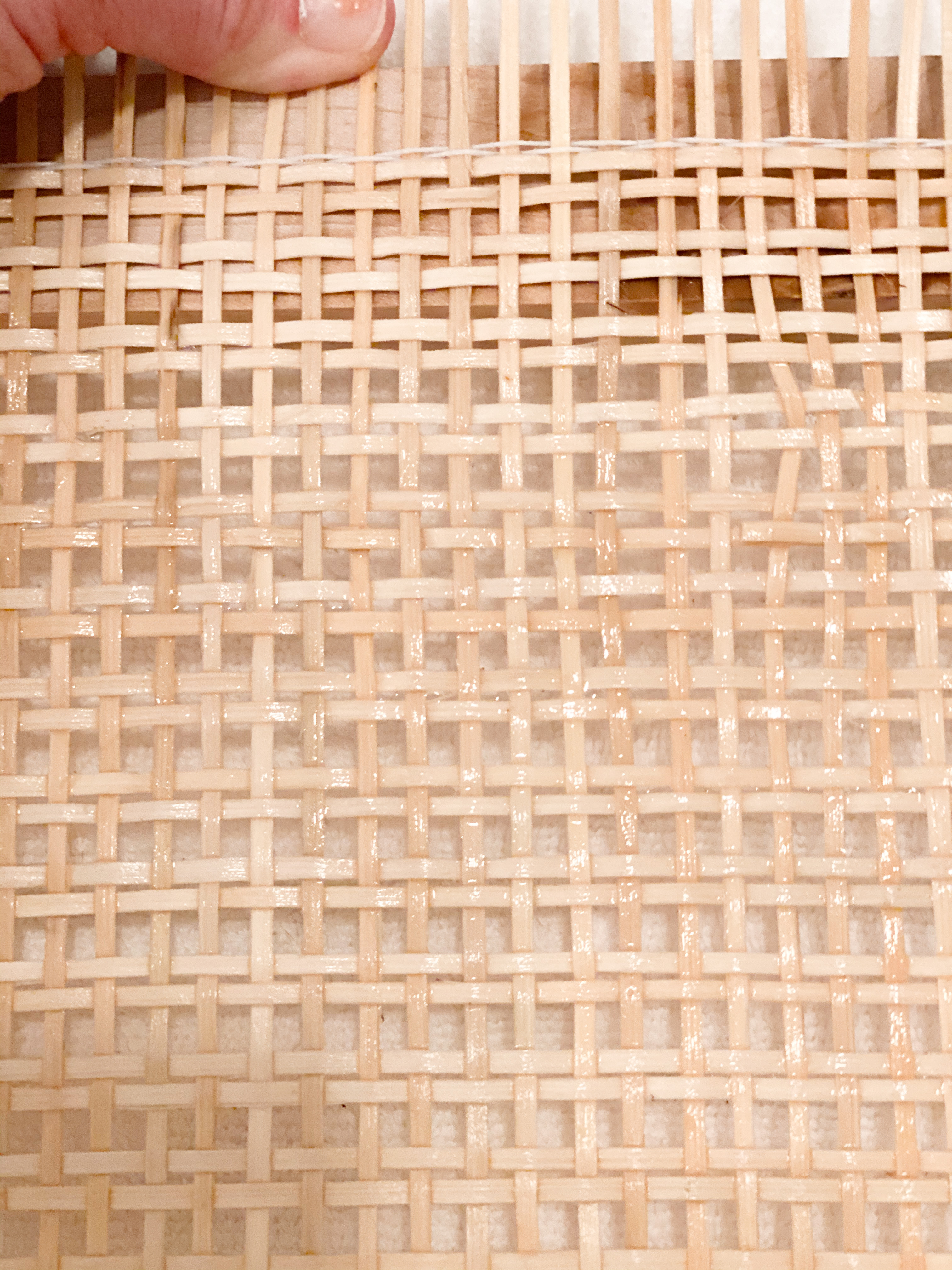
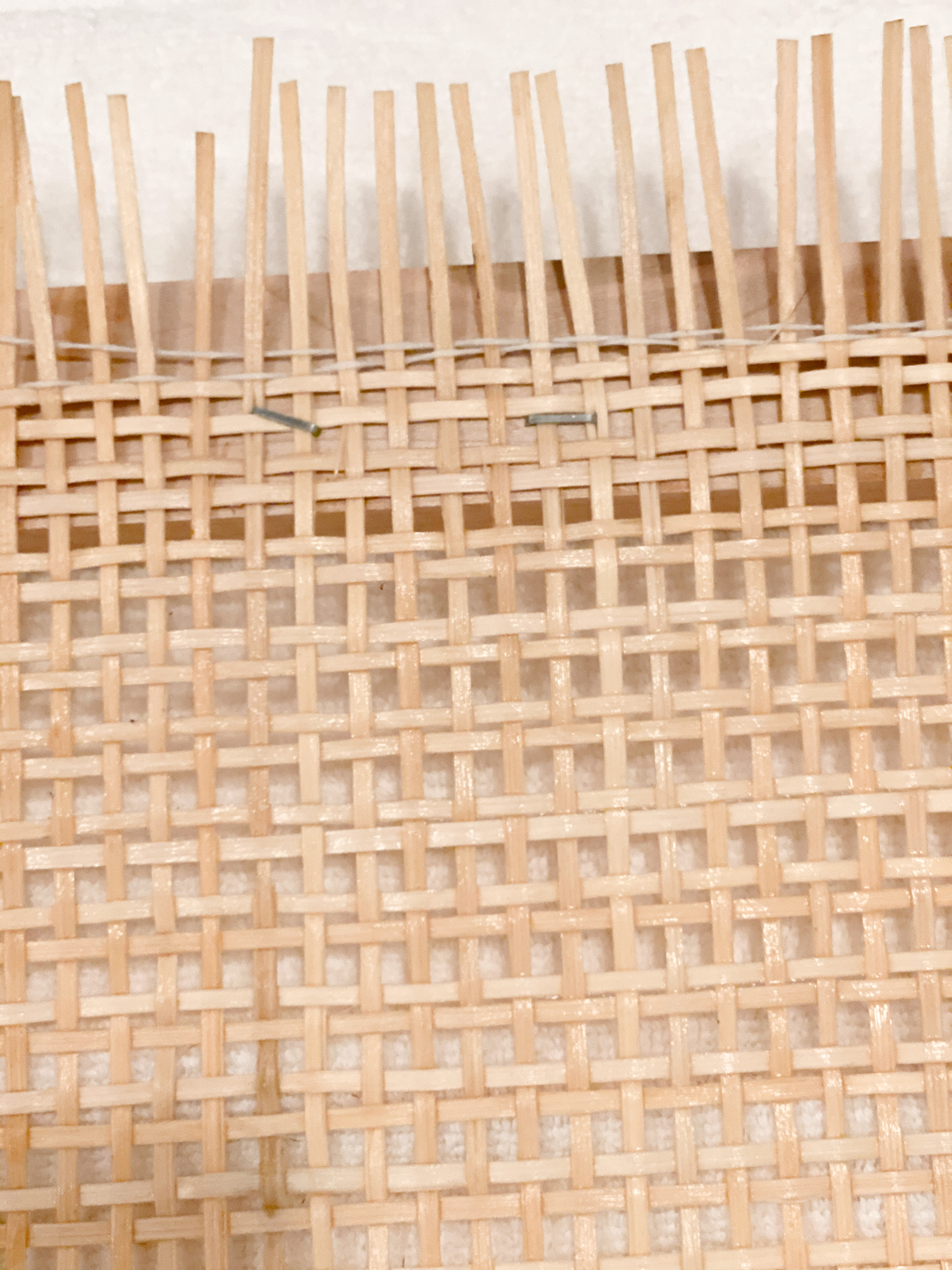
Staple one side, then stretch and staple the opposite side. Repeat. I stretched the caning as much as possible to get it tight and straight, then stapled every inch or so – more is more.
No matter how hard I tried, it still dried a little crooked. The pattern isn’t perfectly symmetrical, but it still looks great!
Size Does Matter
I don’t use this phrase lightly, but one of our biggest takeaways from this project is that size really does make a difference… at least as far as staples and nails into maple are concerned.
The staple gun started out working really well, then halfway through, it stopped. We quickly realized that when we refilled the staple gun, we used a larger size staple which was causing a problem.
We used this pack of assorted staples. The sizes in the pack larger than the 3/8″ size staple didn’t work for this project. Even with the 3/8″ size, sometimes we had to go back over them with a hammer to flatten them. I assume that the 5/16″ and 1/4″ sizes could work as well, but we stuck with the size that was working.
All I can say is, be sure to test your tools and supplies, and take note going forward!
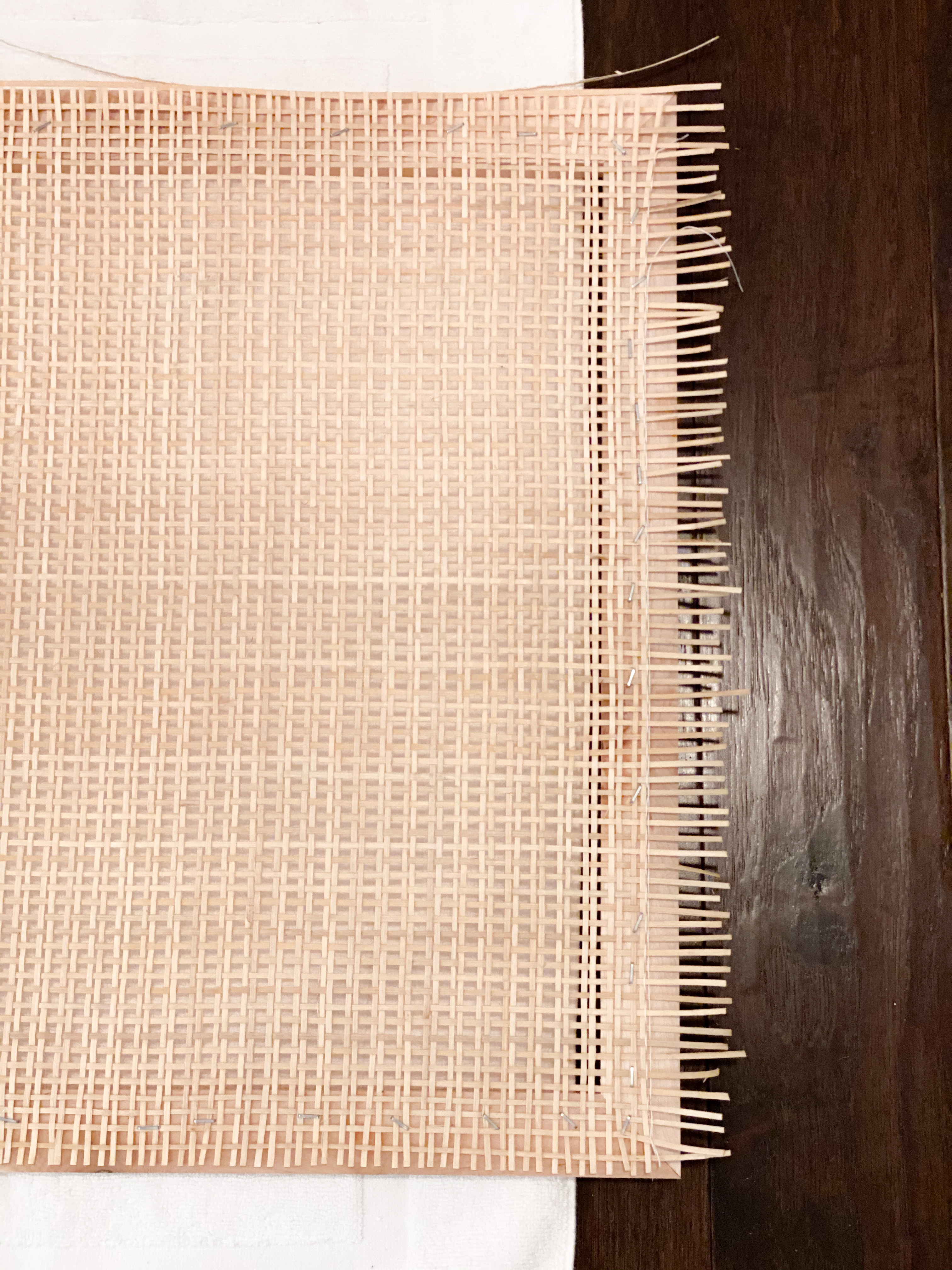

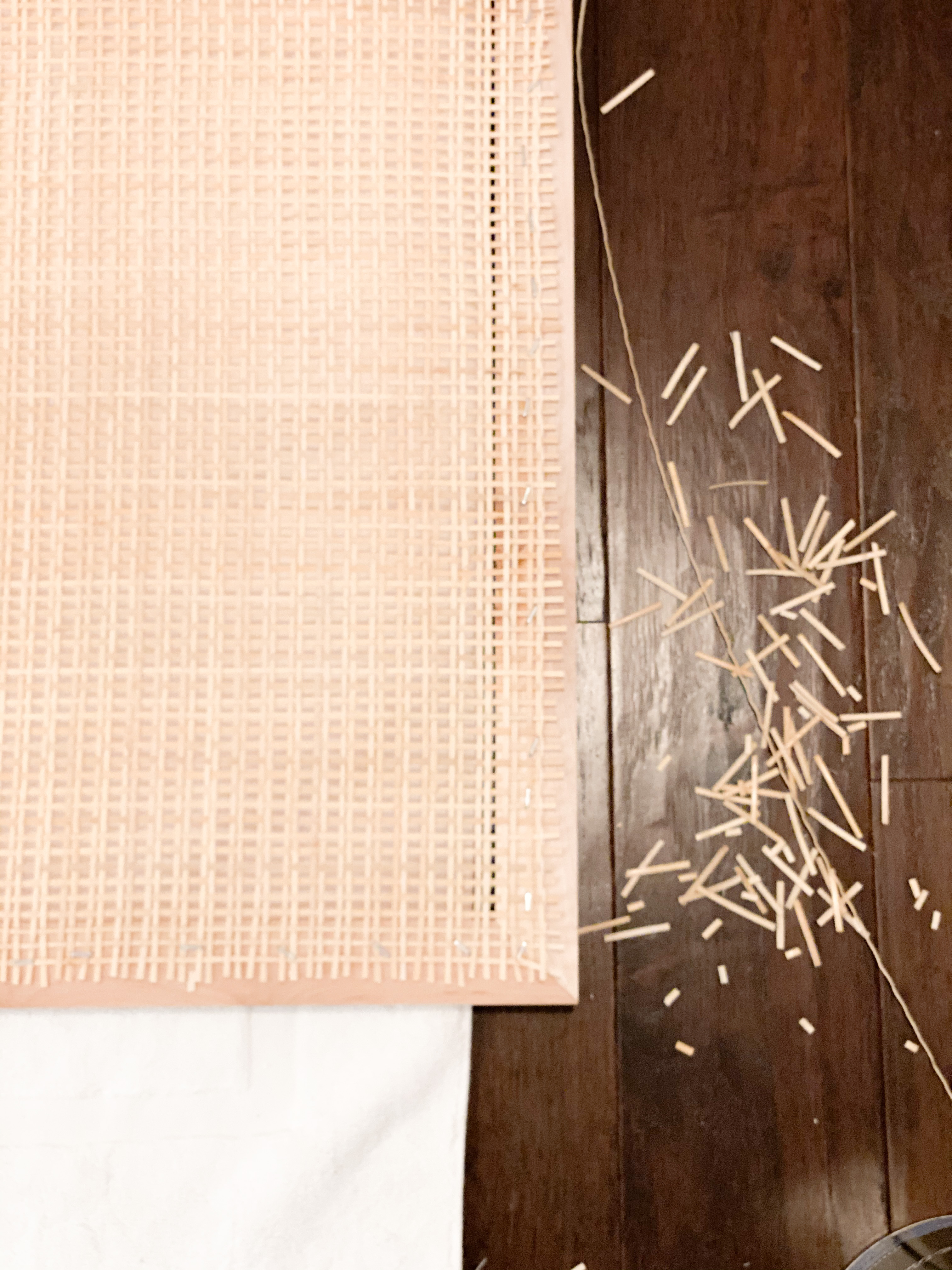
Once all sides have been stapled, use scissors to trim the excess fabric. You want to cut it off just inside the edge of the frame. If you cut it too close to the inside of the frame, the wood won’t be able to hold the fabric quite as tight. You also don’t want it to be hanging off the outside edge at all. If it’s hanging out, it’s harder to make the pieces flush when assembling.
Adding the Backing
The next step is adding the 1×2 pine frame to the back. We originally assembled the four pieces of the pine frame first. We quickly realized that it would be too hard to line up the pieces exactly. Instead, we cut all the pieces of the pine and assembled them to the back, one by one.
Apply a thin line of wood glue first. You want to make sure that the glue gets on every piece of the caning. However, you don’t want to use too much glue, or it will drip out onto the cane. This happened to one or two of our pieces, but we caught it in time to wipe.
Just pay attention as you go!
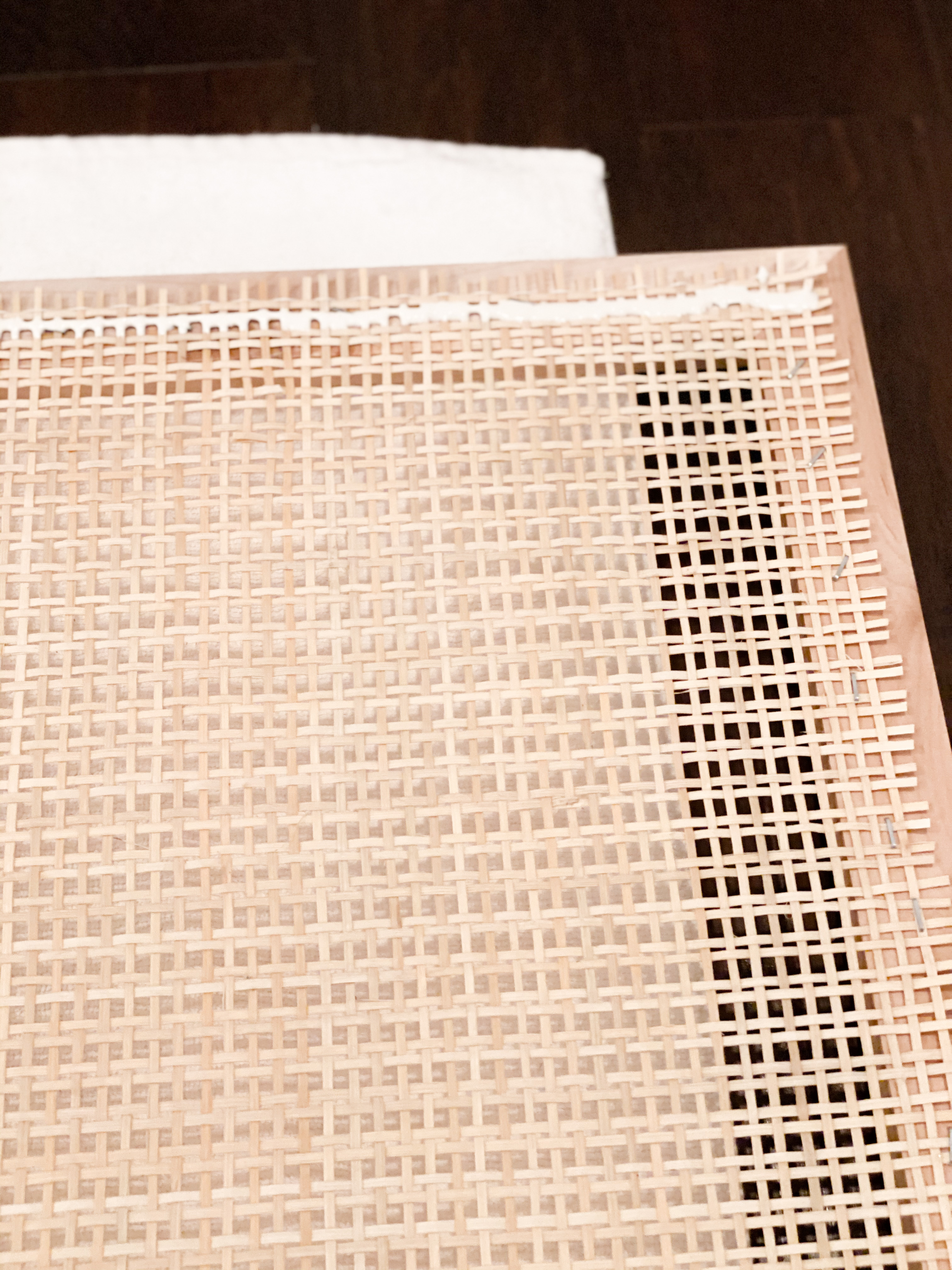
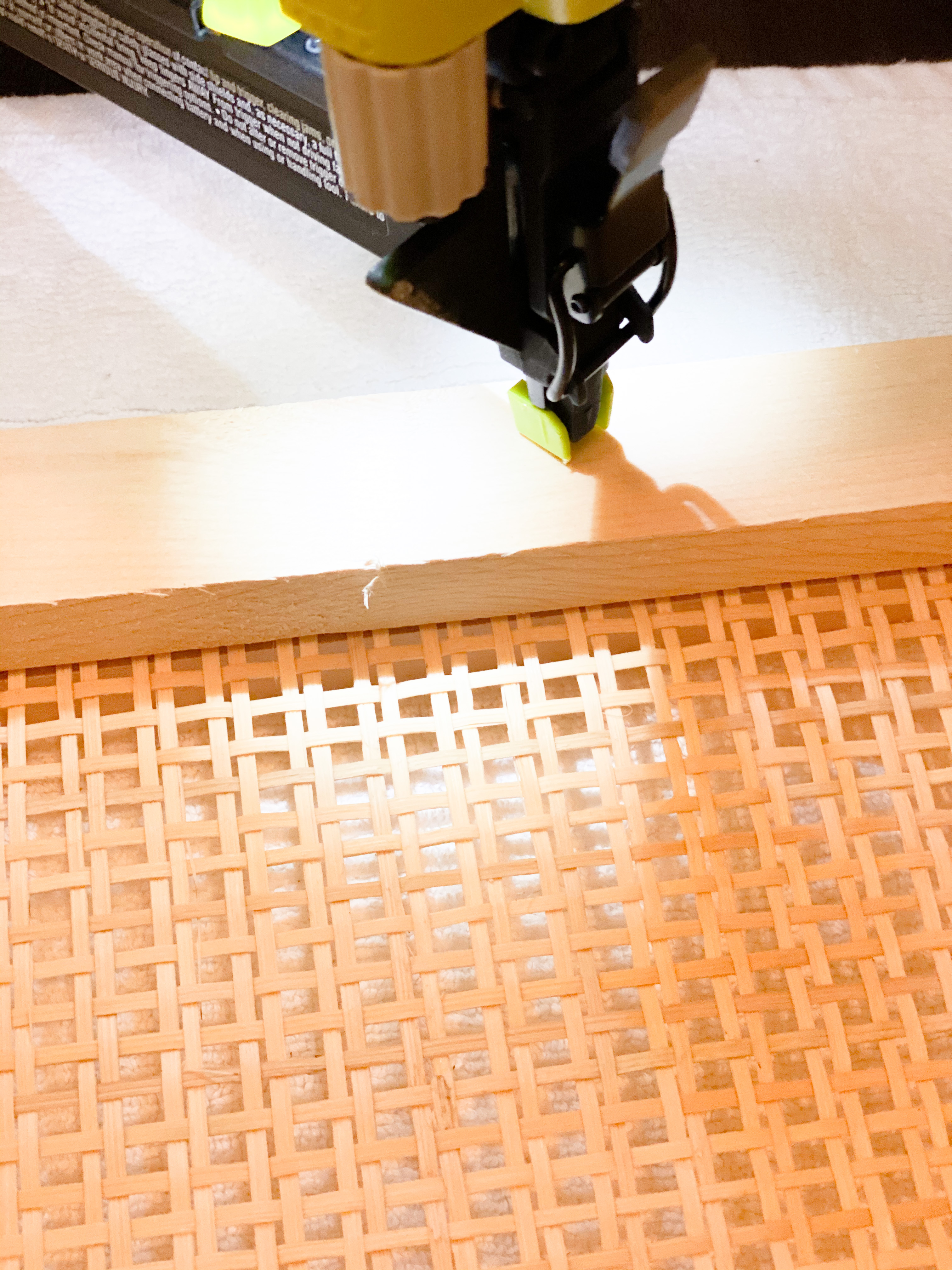
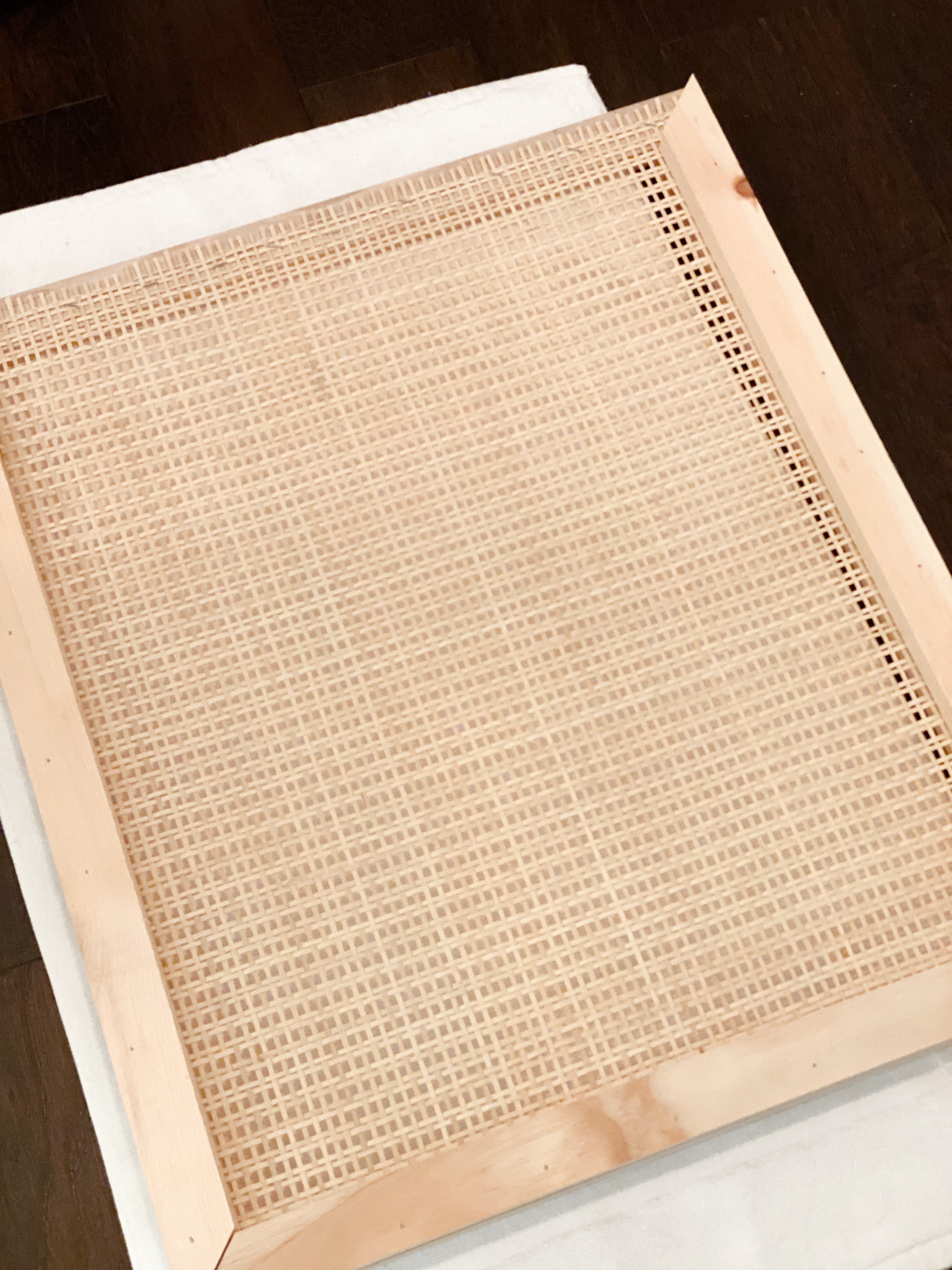
After the glue is down, lay the piece of pine on top and nail it into place. Again, make sure you’re using the correct size nail! Our very first frame was a bust because the nail came through the front. Not cool for our floors either.
Assemble the Cane Headboard
Once the “blocks” have all dried (we waited until the next day), you can start assembling them together to form the cane headboard. To be completely honest, we are not finished with this part, as I need to attach the final two rows.
I laid the “blocks” on the floor first, like a puzzle. Then we started connecting them in groups of three. We used wood glue and clamps first. Once they sat for a few minutes, we used screws through the pine backing. The screws we used were 2″ screws, but we should’ve used slightly bigger. I think 2 1/2″ would be perfect.
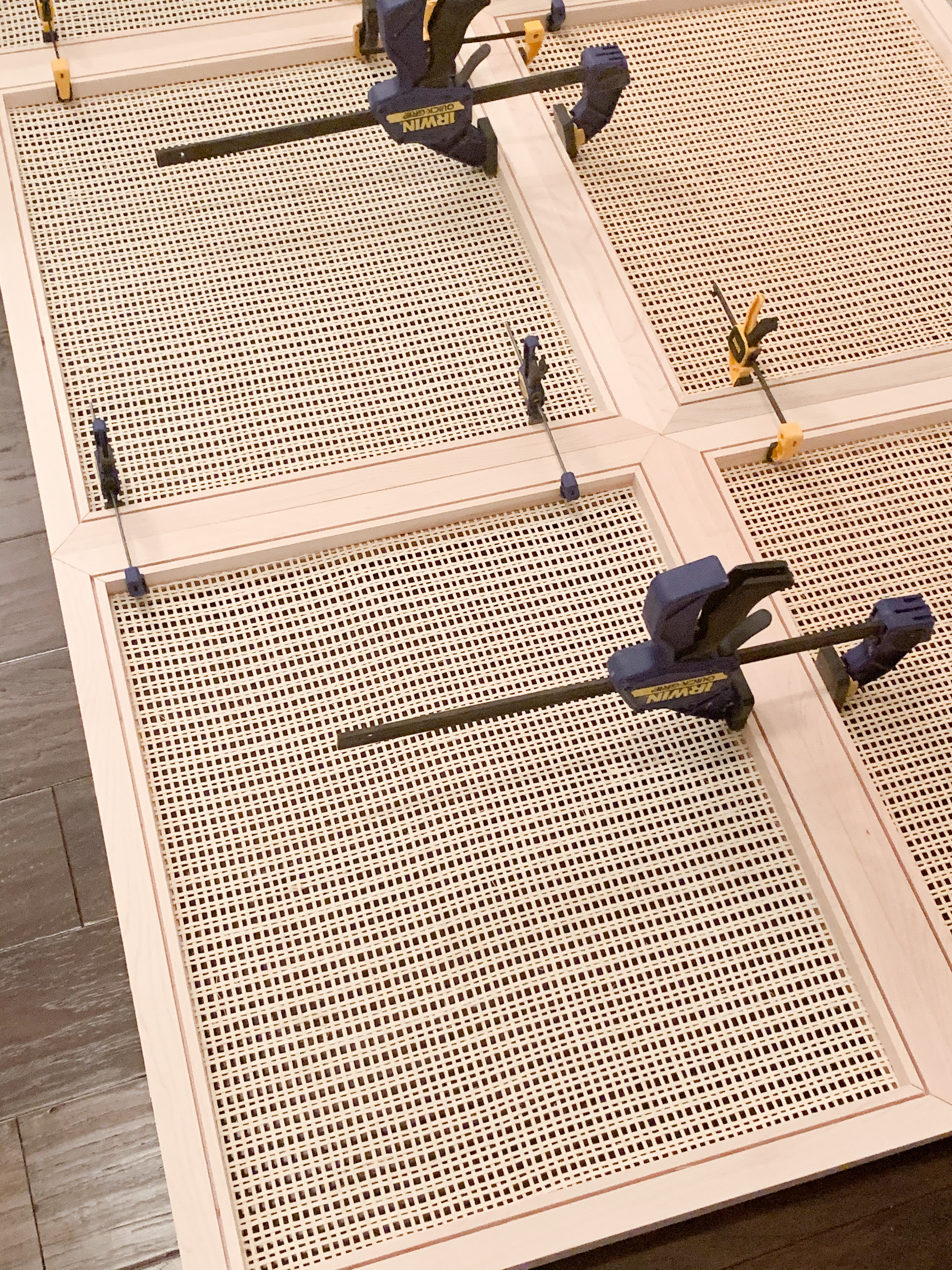
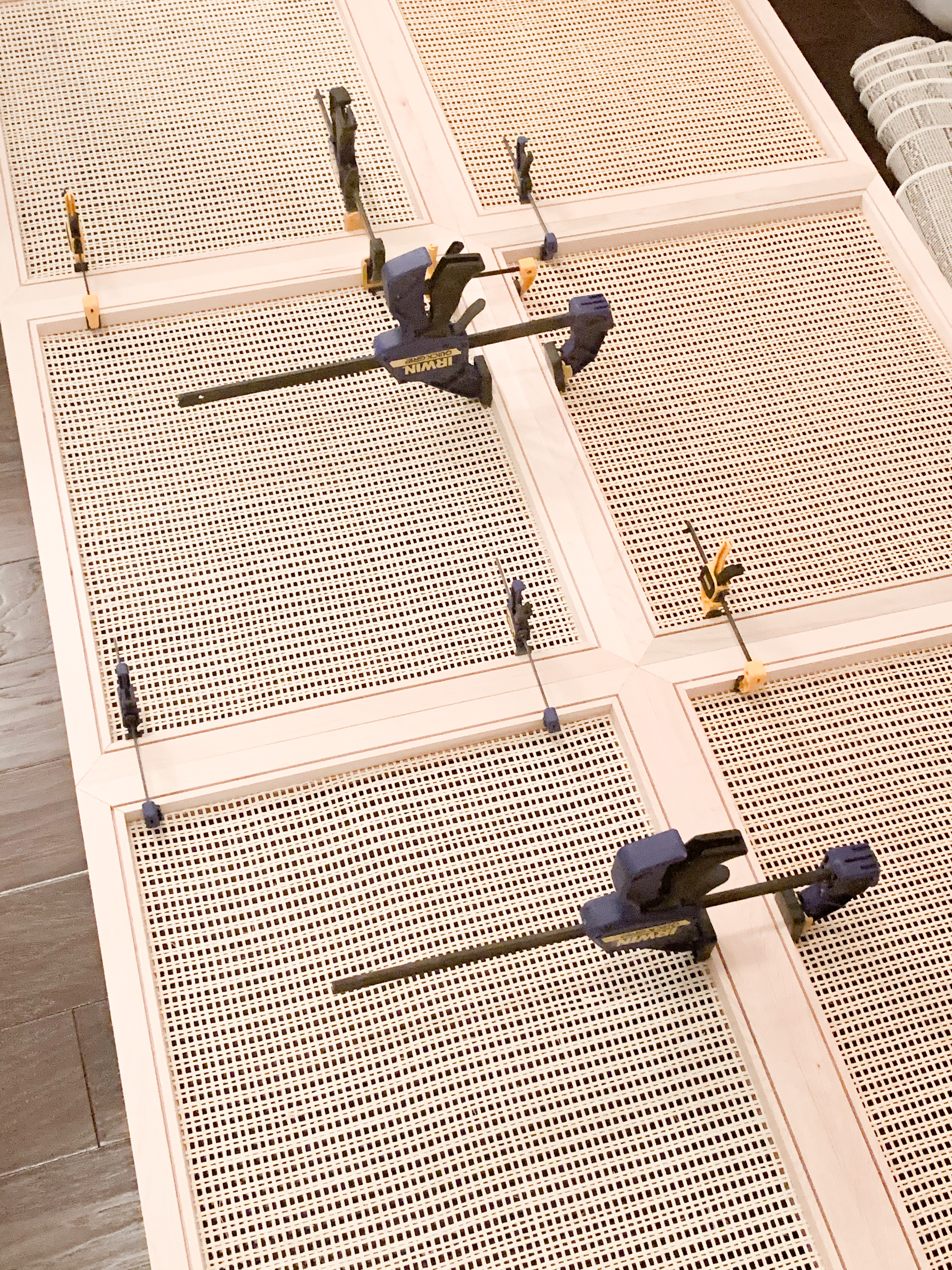
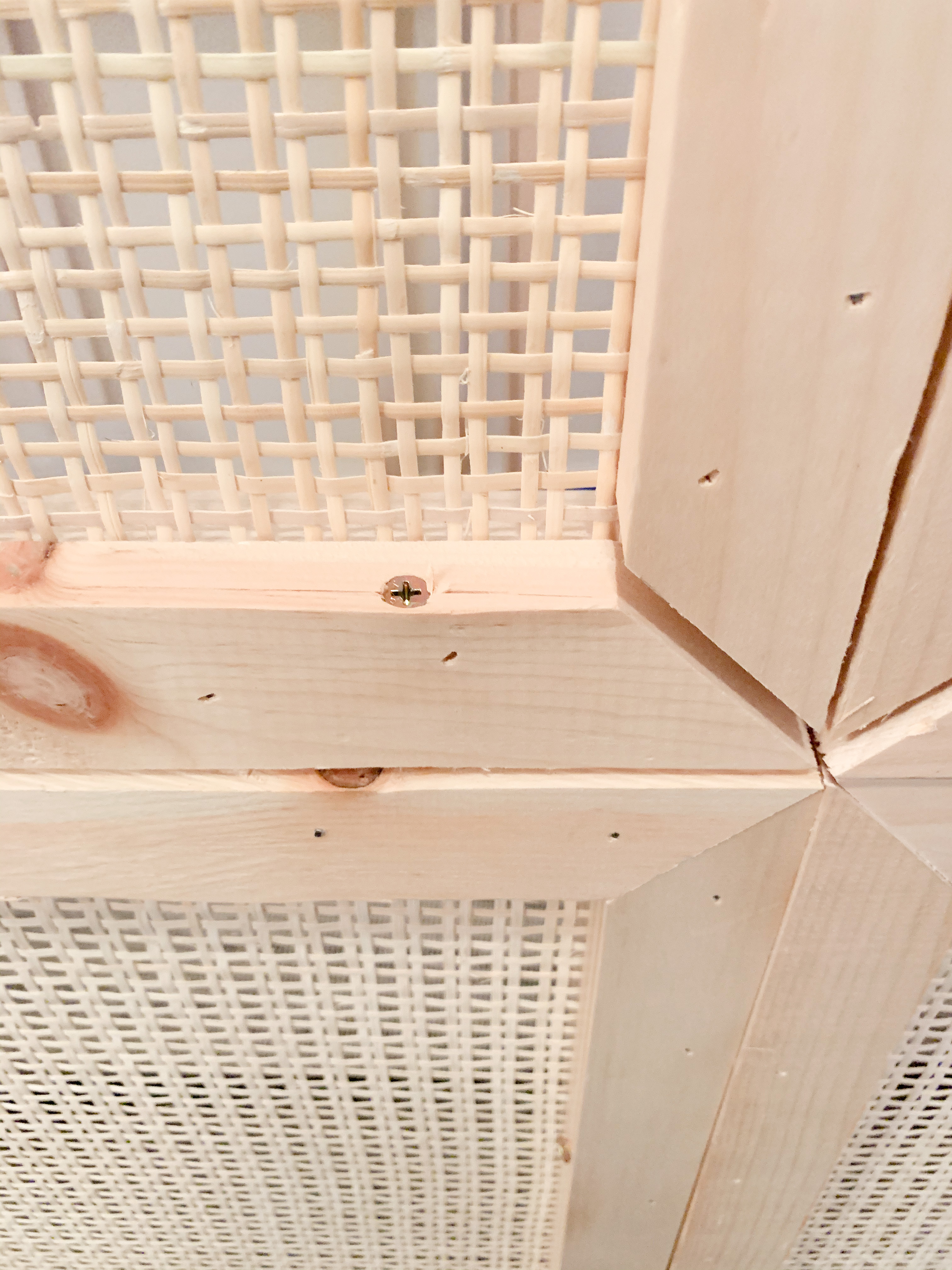
In the far right picture, notice that the pieces of backer pine don’t line up exactly right. They will be facing the wall side, so that part wasn’t important to us. We are planning on installing mender plates to those joints to make sure they are as secure as possible.
The other big decision we need to make is how to attach the cane headboard to the wall… Stay tuned!
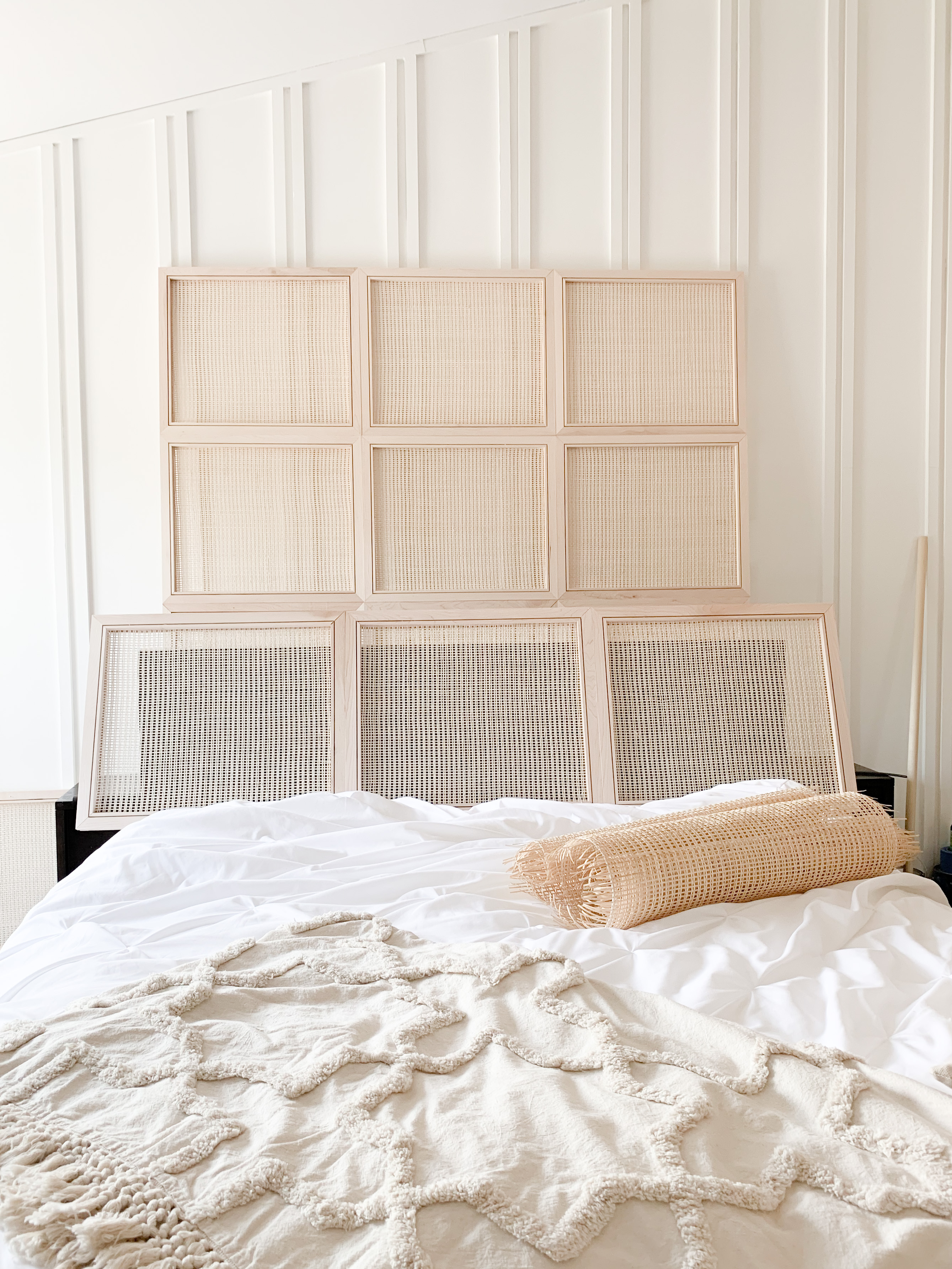
Next Post: Modern Bohemian Bedroom Re-Design, ORC Week 7 & 8

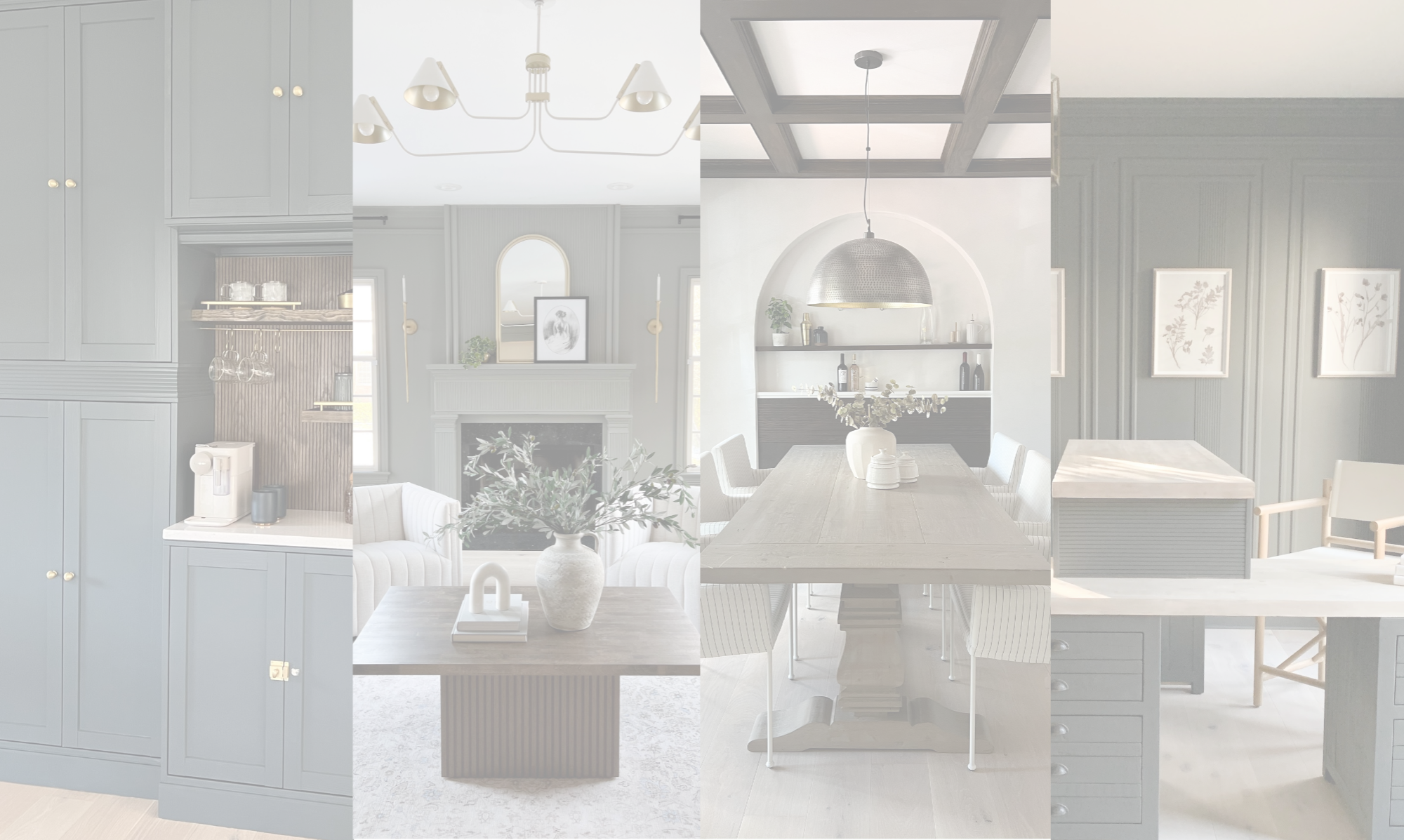
Ok … this headboard is freaking awesome Annie! I’m so happy you guys stuck with it because this is looking so good! It pairs nicely with the white walls and neutral bedding!
I was just over on your blog! No joke, I instantly knew which post was yours in the list because I recognized the amazing photography! And thank you so so much! It’s helping that we’re finally starting to see it come together, even if it’s taken longer than planned haha
Oh my goodness!!! This is such a creative idea! It’s looking gorgeous! I need to find you on IG now
Thank you so so much, Cait! I really appreciate that! And I LOVE the stone/wood benches that you made! They’re beautiful!!
I am obsessed with this!! This is such a helpful tutorial too!! Plan to tackle a caning project in the coming months, so will be sure to reference this when I do
Thank you so much, Morgan!! I’m so excited to see what you do! And I LOVE the striped wall you did!!
This headboard is amazing!! You guys nailed it, and what a happy accident with that groove because I think it adds a little somethin’ somethin’
Thank you so so much, Erin! I totally agree about the groove! And I’m absolutely loving the furniture transformations you shared! Such beautiful pieces!
This looks SOOOO good! I want to do this on my kitchen cabinets, once I finish this ORC.
Thank you so so much, Nicole! Cane would look amazing on kitchen cabinets!! And your ORC project is looking incredible!
Love how this turned out! It is so great with those walls too
I appreciate that so much, Laura!! Thank you!! It’s finally starting to come together haha
They look great! It’s so funny, we’re adding the same exact caning to the nightstands we built and got it from the same place hehehe
Thank you so much, Gloria! And that’s so amazing! Aren’t they seriously the best??
OMG this is amazing!!! can’t believe you did it all yourself and I will have to try it myself!
This is seriously the nicest comment ever, Tim! Thank you so so much!! It’s been a lot of work, but I just saw all you’ve been doing, and I can’t even wrap my head around it haha…. SO GOOD!!
All the heart eyes!! This headboard is BEAUTIFUL! Great job!
This seriously means a ton! Thank you so so much!!
It’s been so fun following along on this space!
I appreciate that so much, Jenna! Thank you!! Your space is looking INCREDIBLE!